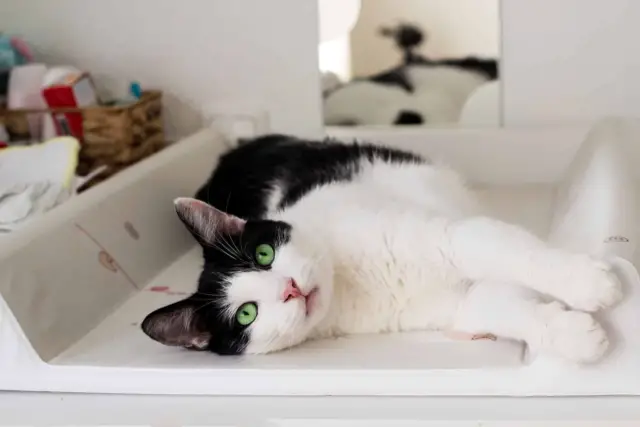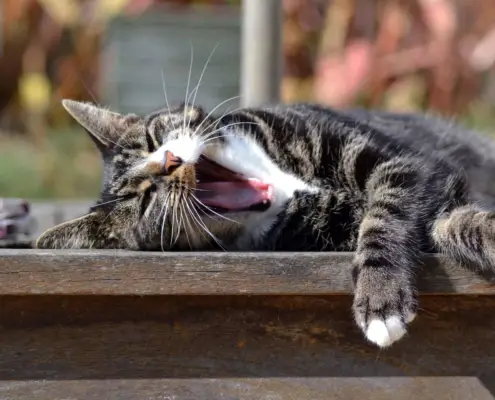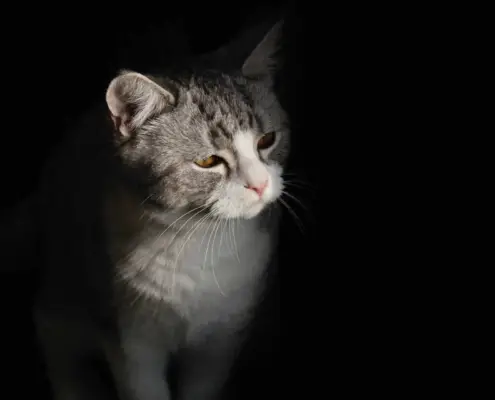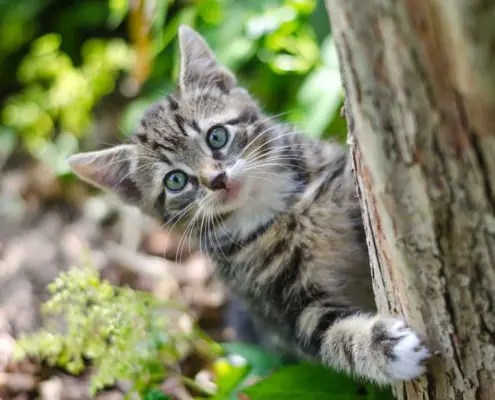
Black and white cats have always captivated our attention with their striking coat patterns. Their distinct and eye-catching appearance raises questions about the genetics behind their unique coloring. In this article, we will explore the intricate world of cat genetics and uncover the secrets behind why some cats are black and white.
Understanding cat genetics
To comprehend the genetics of black and white cats, it is essential to have a basic understanding of cat genetics as a whole. Genes are responsible for determining various characteristics in cats, including coat color. These genes are inherited from both parents and can combine in different ways to create a wide range of coat patterns.
The role of genes in determining coat color
Coat color in cats is a complex trait influenced by multiple genes. These genes control the production and distribution of pigments in the hair follicles. The two primary pigments responsible for coat color are eumelanin, which produces black pigment, and pheomelanin, which produces red and orange pigment. The interaction between these pigments and the genes that regulate their production ultimately determines the final coat color of a cat.
The genetics behind black and white cats
Black and white cats, also known as tuxedo cats or bicolor cats, have a specific gene combination that leads to their distinctive coat pattern. The primary gene responsible for black coloration is known as the melanocortin 1 receptor (MC1R) gene. A mutation in this gene results in the production of excess eumelanin, leading to the black patches on a cat’s coat.
In addition to the MC1R gene, another gene called the white spotting gene plays a crucial role in determining the amount and distribution of white fur. This gene controls the migration and proliferation of pigment-producing cells during embryonic development. Variations in the white spotting gene can result in different coat patterns, ranging from solid black with minimal white markings to predominantly white with black patches.
Common coat patterns in black and white cats
Black and white cats exhibit various coat patterns, each with its own charm and appeal. The most common coat patterns seen in black and white cats are:
- Tuxedo: Tuxedo cats have a predominantly black coat with white patches on their chest, paws, and face. The white patches often resemble a formal tuxedo, thus giving them their name.
- Bicolor: Bicolor cats have a coat that is approximately 50% black and 50% white. The black and white areas are usually well-defined, creating a distinct contrast.
- Cow pattern: Some black and white cats have a coat pattern that resembles the markings of a Holstein cow. These cats have large black patches on a predominantly white background.
- Van pattern: Cats with the Van pattern have a mostly white coat with coloration limited to the head and tail. The black areas are concentrated in these specific regions, creating a striking contrast.
Factors that influence coat color in cats
While genetics play a significant role in determining the coat color of black and white cats, other factors can also influence their appearance. Environmental factors such as temperature and sunlight exposure can affect the expression of certain genes, potentially altering the intensity or distribution of coat color.
Furthermore, the presence of certain coat color genes can be influenced by the cat’s gender. For instance, the gene responsible for calico and tortoiseshell coat patterns is located on the X chromosome. As a result, calico and tortoiseshell cats are almost exclusively female, with males rarely displaying these coat patterns.
Other fascinating facts about black and white cats
Black and white cats have long been associated with superstitions and cultural beliefs. In many cultures, they are considered symbols of good luck and prosperity. For example, in Japanese folklore, the “maneki-neko” or “beckoning cat” is often depicted as a black and white cat with one paw raised, believed to bring good fortune to its owner.
Additionally, black and white cats have played prominent roles in literature and popular culture. From the mischievous Cheshire Cat in Lewis Carroll’s “Alice’s Adventures in Wonderland” to the iconic character Sylvester from the Looney Tunes cartoons, these cats have left an indelible mark on our imagination.
Breeding black and white cats
For cat breeders, producing black and white cats involves careful selection and breeding. By understanding the genetics behind coat color, breeders can manipulate specific genes to achieve desired coat patterns. However, responsible breeding practices should always prioritize the health and well-being of the cats involved.
The symbolism and cultural significance of black and white cats
Black and white cats have held symbolic meanings in various cultures throughout history. In many ancient civilizations, they were revered as guardians of the afterlife or associated with spiritual entities. Even today, black and white cats are sometimes associated with witchcraft or considered omens of good or bad fortune depending on the cultural context.
Celebrating the uniqueness of black and white cats
In conclusion, the genetics behind black and white cats are a fascinating subject that showcases the intricacies of feline biology. Understanding how genes interact and influence coat color allows us to appreciate the beauty and diversity of these incredible creatures. Whether you believe in their symbolic significance or simply admire their striking appearance, black and white cats continue to captivate our hearts and minds.
If you’re considering adding a black and white cat to your family, remember to adopt from a reputable shelter or rescue organization. These unique felines deserve a loving home, and by adopting, you can make a positive impact on their lives.
If you enjoyed my article, I would appreciate you sharing it with your network.

Sima Ndlebe
Sima writes for CatBuzz. He is interested in Cats, Health and Fitness, and Entrepreneurship.
Published: 31 October 2023



